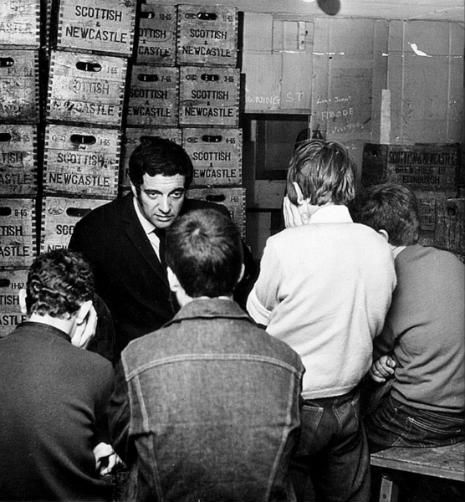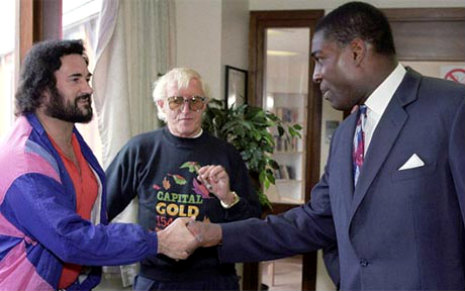
Gangs have been synonymous with Glasgow since the 1800s. The poverty, squalor and terrible overcrowding of this great industrial city led to a harsh indifferent attitude to life and self-preservation.
The Penny Mob came out of the East End of the city. They had their own rules, dress code and even collected fees for a shared fund to pay police and court fines - hence their name. The Penny Mob elected their own chairmen to take charge of collecting money for the fund and its distribution.
The Penny Mob bred many rivals, who they fought for territorial dominance of a few blocks of street. The San Toys operated out of the Calton, a district close to the city center, and they fought with the Tim Malloys. Battles were brutal, bloody and quick. Fights often took place in Glasgow Green, a large municipal park to the east of the city, on the banks of the River Clyde. These were called “square gos” - one-on-one fights, where gang leaders slugged it out with each other. More often than not, these ended in pitched battles between rival factions.
Gangs spread throughout the city - each district, or block, was demarcated with its own gang. The South Side had some of the most vicious gangs, including the Mealy Boys, the McGlynn Push and the Gold Dust Gang, which operated out of the Gorbals. Gangs used bars and drinking dens as their HQs and meeting places, from where they planned their next territorial battle.
By the First World War, gangs were rampant across the city, with the most infamous being the Redskins that ruled the East End. Unlike previous gangs, the Redskins preferred swords, hatchets, machetes, razors and lead-weighted clubs rather than fists. They also operated as a major criminal organization, running protection rackets on local shops and businesses, and were involved in extortion, burglary and random mugging.
The Redskins fought rivals like the Calton Black Hand, the Bloodhound Flying Corps, the Hi-Hi’s, the Kelly Boys from Govan and the Baltic Fleet, which ran out of Baltic Street. The Redskins were eventually crushed by the police who were not afraid to use their own brutal tactics to quell the gangs.
Gangs always flourished during times of poverty. The 1930’s Depression saw a rise in violence and a new wave of gangs using cut throat razors as their weapon of choice, not just on their enemies (where they were used to inflict the “Glasgow Smile”), but on innocent members of the public.
In the 1960s, singer Frankie Vaughan famously visited one of Glasgow’s most troubled areas - Easterhouse. Here the singer successfully co-ordinated an amnesty between rival gangs, raising thousands of pounds to pay for amenities and youth centers. Vaughan, who had starred with Marilyn Monroe in Let’s Make Love, and had a highly success singing career, became a hero to the community.
By the 1970s, gangs had lost much of their appeal as judges gave out stiff sentences - a 2-5 year jail term for carrying a razor blade. Some gang members moved into more serious crime, running drugs and extortion rings, and carrying out major bank robberies across the city.
Today, though Glasgow has changed dramatically for the better, it still has an unfortunate reputation, In part because it is sadly still one of most violent cities in Western Europe. The homicide rate for males aged between 10 and 29 is on a par with the countries Argentina, Costa Rica and Lithuania. Not other cities but whole countries. A stabbing occurs every 6 hours. Many more go unreported. Alcohol-related death rates are 3 times the British average. And there are parts of Glasgow have the lowest life expectancies in Europe.
Yet, I love this city, for there is a great humanity amongst the people of Glasgow, that reflects a genuine belief things can and will get better.
This documentary focusses on Glasgow gangs during the 1960s, interviewing various gang members and looking at Frankie Vaughan’s involvement in bringing an amnesty to parts of the city.
With thanks to Racket Racket.
















